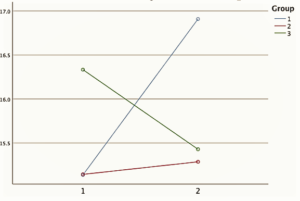 There are many good reasons to learn English as second language. There are more than 6,000 different languages spoken all over the world, but English is and will continue to be a common means of communication for speakers of all languages.
There are many good reasons to learn English as second language. There are more than 6,000 different languages spoken all over the world, but English is and will continue to be a common means of communication for speakers of all languages.
According to the most recent statistics, English is the mother tongue of more than 375 million people. English is the official language in 54 countries that cover Europe, the Americas, Africa, Asia, and Australasia, and which include countries as diverse as New Zealand, South Africa, Belize, India, Malta, and Singapore. This means that English is a truly universal language that makes communication across the globe easy and convenient.
In addition, English is the world’s most popular second language choice. The British Council estimates that more than 1 billion people are learning English as a second language at any given time. English is taught at school as a second language in hundreds of countries all over the world, from France to Thailand, Israel to Malaysia, in Sweden, China, and in many other countries.
The cornerstones of language learning
Learning any modern language, including English, is known to have four cornerstones:
- Listening
- Reading
- Speaking
- Writing
.
Two are passive: listening and reading. The two active skills are speaking and writing. These two active skills involve one’s ability to produce language – according to the rules of the language. Once you’ve mastered these skills, you can safely say that you’re fluent in that language.
This might sound simple, but the fact is that learning any new language is difficult, and learning English is particularly difficult to learn for non-native speakers. How hard it is to learn depends on what your native language is. If your mother tongue is more similar in terms of sounds, vocabulary and grammatical patterns to another – for instance you’re a speaker of Dutch or German – then English will be easier to learn. But if you speak a language that comes from a more distantly related tongue – say Chinese – then English is more likely to prove a tougher nut to crack.
One reason why English is inherently difficult is that English has a baffling spelling system, even for native speakers, or kids going to school. Take words like ‘dough’, ‘tough’ and ‘bough’ – they all have the same spelling, but are pronounced completely differently.
Another reason is that English has a peculiarity: the phenomenon of phrasal verbs – a verb whose meaning is changed by a small word added to it. Take ‘run’ for example. We can ‘run over’ someone, have a ‘run in’, we can ‘run something down’, or ‘run up a bill’, or even ‘run something by someone’. On each occasion, when you add a word like ‘in’ or ‘over’, you’re changing the meaning – and it often seems to be with no rhyme or reason. Why do we ‘add up’ a bill, but a house gets ‘burned down’? So these prepositions change the meanings of verbs. For Spanish and French speakers, for example, who don’t have this in their language, it can be very difficult to understand – and to learn.
If it’s so hard, why do it?
First, speaking a second language fluently – especially English – opens up career opportunities that are unavailable to monolinguals. Translators, language teachers, and certain health care professionals are just a few of the occupations that require fluency in two or more languages. Even when applying for jobs in which bilingualism isn’t a necessity, your ability to speak another language will give you a leg up on the competition.
A second financial benefit affects you more directly — by increasing your pay. According to Salary.com, bilingual employees make between five and twenty percent more per hour than monolingual workers.
All of that mental juggling of two languages pays off in another way. People who speak a second language may even keep symptoms of Alzheimer’s disease at bay. When Dr. Bialystok studied 450 people with Alzheimer’s disease, she found being bilingual delayed the onset of dementia symptoms by four to five years compared to those who spoke only one language.
Let’s make it easy!
While we cannot change a language to make it easier for students to learn that language, we can change the students to make it easier for them to master the vocabulary, spelling rules, grammar, idioms, etc. of that language. We can make it easier for students by developing the foundational skills of language learning, a few which are discussed below, and are developed by Edublox Online Tutor.
Auditory memory
Auditory memory involves being able to take in information that is presented orally, to process that information, store it in one’s mind and then recall what one has heard. Basically, it involves the skills of attending, listening, processing, storing, and recalling.
Young children face a difficult task as they learn to distinguish similar sounds and then to use these sounds properly. It is even more true if a child learns English as a second language. They face several challenges, as they must hear the differences in words like deal and teal, beer and peer, cheap and jeep and sheep.
A poor auditory short-term memory is often the cause for a child’s inability to learn to read using the phonics method, says Cyndi Ringoen, a neurodevelopmentalist. “Phonics is an auditory learning system, and it is imperative to have a sufficient auditory short-term memory in order to learn, utilize and understand reading using the phonics method.”
According to Ringoen, in order to begin to utilize phonics beyond memorizing a few individual sounds, a child must have an auditory digit span close to six.
Digit span is a common measure of short-term memory, i.e. the number of digits a person can absorb and recall in correct serial order after hearing them or seeing them. As is usual in short-term memory tasks, here the person has to remember a small amount of information for a relatively short time, and the order of recall is important.
If a child’s digit span is below six, you will see a child, depending on how much drill they have had, who can say all the sounds of the phonemes, and possibly put a few together into words, but at the end of the sentence or paragraph cannot understand what they have just read, says Ringoen.
On the flip side, a study by Papagno and Vallar showed that polyglots (people who could speak three or more languages fluently) has a superior level of performance in auditory digit span tests compared to non-polyglots, even though the two groups had comparable performance in tasks assessing general intelligence.
Visual memory
While auditory memory is essential when one is learning to read using the phonics method, visual memory is fundamental to develop a “visual dictionary.”
Skilled readers can recognize words at lightning fast speed when they read because the words have been placed in a sort of visual dictionary, according to Georgetown University Medical Center (GUMC) neuroscientists. The visual dictionary idea rebuts the theory that our brain “sounds out” words each time we see them.
The GUMC scientists tested word recognition in 12 volunteers using fMRI. They were able to see that words that are different, but sound the same (like “hare” and “hair”) activate different neurons, akin to accessing different entries in a dictionary’s catalogue. If the sounds of the word had influence in this part of the brain we would expect to see that they activate the same or similar neurons, but this was not the case; ‘hair’ and ‘hare’ looked just as different as ‘hair’ and ‘soup’. This suggests that all we use is the visual information of a word and not the sounds.
Needless to say, in order for this visual dictionary to develop we need a good visual memory.
Working memory
The term working memory was coined in the 1970s by two researchers named Baddeley and Hitch, referring to the ability to temporarily hold several facts or thoughts in memory while solving a problem or performing a task. To solve an arithmetic problem like (3 X 3) + (4 X 2) in your head, for example, you need to keep the intermediate results in mind (i.e., 3 X 3 = 9) to be able to solve the entire problem. Dr. Tracy Alloway from Durham University’s School of Education explains, “Working memory is a bit like a mental jotting pad and how good this is in someone will either ease their path to learning or seriously prevent them from learning.”
An important and consistent finding is that working memory problems interfere with reading comprehension. Reading is a complex skill that requires the simultaneous activation of many different brain processes.
To comprehend sentences, several more skills are necessary. The reader must not only decode the words, but also comprehend the syntax, retain the sequence of words, use contextual cues, and integrate this with existing knowledge. This must be done simultaneously in order for sentences to be understood.
At the same time, sentences must be held in working memory and integrated with one another. Each sentence is read, understood, associated and integrated with the previous one and so forth. Eventually the entire paragraph is read and the reader continues to the next one.
By the end of the chapter both the details and main idea need to be retained in working memory, otherwise the reader may have retained isolated facts but may not know the sequence of events nor understand the main idea.
How Edublox can help
Edublox offers multisensory cognitive training programs to develop foundational skills including auditory, visual and working memory.
In one research study Edublox improved visual memory by 1.3 years in 5 days. Chiropractor Dr. Jaidan Mays compared the effects of Edublox training versus Edublox training combined with cervical spinal manipulative therapy on visual memory and visual sequential memory.
Thirty-four Grade 5, 6 and 7 students from an inner city school participated in Mays’s study. Two subtests of the Test of Visual Perceptual Skills were used to assess the visual memory and visual sequential memory of the students. They were then divided into two equal groups.
The members of the first group (the Edublox Group) did Edublox for 22.5 hours over a period of five days. The members of the second group (the Edublox and Adjustment Group) received the same Edublox training as the first group. But this second group also received cervical adjustment therapy every morning for the five-day period. The assessment was repeated after the five days.
The results: The mean Visual Memory Skills Test POST score across both groups was significantly higher than the mean Visual Memory Skills Test PRE score. The mean score across both groups improved from 6.2 years to 7.5 years. As the graph below illustrates, the Edublox Group improved slightly more than the Edublox and Adjustment Group (an improvement from 6.3 to 7.8 years versus an improvement from 6.2 to 7.1 years):
.

.
In a recent, soon-to-be published research study, 64 2nd grade students were divided into three groups: group 1 consisted of 22 students who did Edublox Online Tutor (Development Tutor) for 28 hours over a period of three weeks, while group 2 consisted of 21 who played computer games, and the rest continued with school. The Test of Auditory Processing Skills (TAPS-3) was used to assess auditory memory of numbers, words and sentences, before and after the three-week period. Preliminary results show that the auditory digit spans of the Edublox group (blue line) improved significantly:
.

.
© Edublox
Reading and learning made easy –
“It’s been six months … and already she is one of the top performers in her class”
I was told that my daughter would never make it in a mainstream school and that she had to be transferred to a remedial school... She is getting 6's and 7's and she is in mainstream school. Continue Reading
Zan’s Mom, South Africa Edublox Online Tutor December 21, 2013

